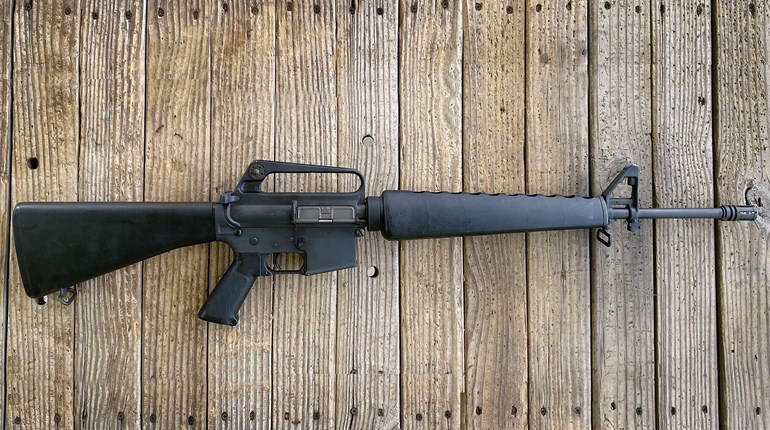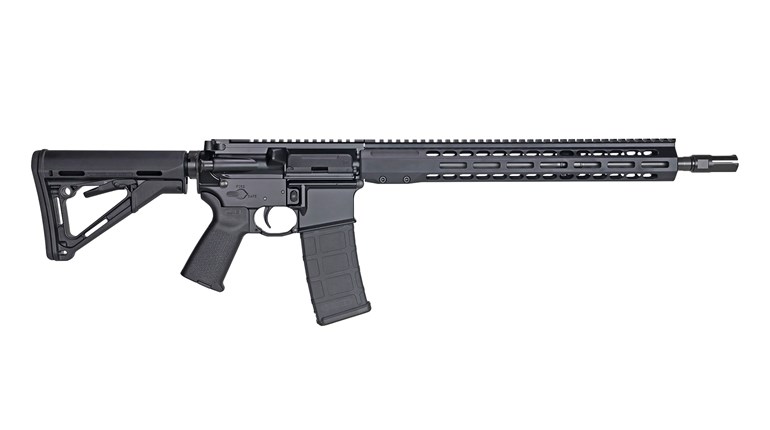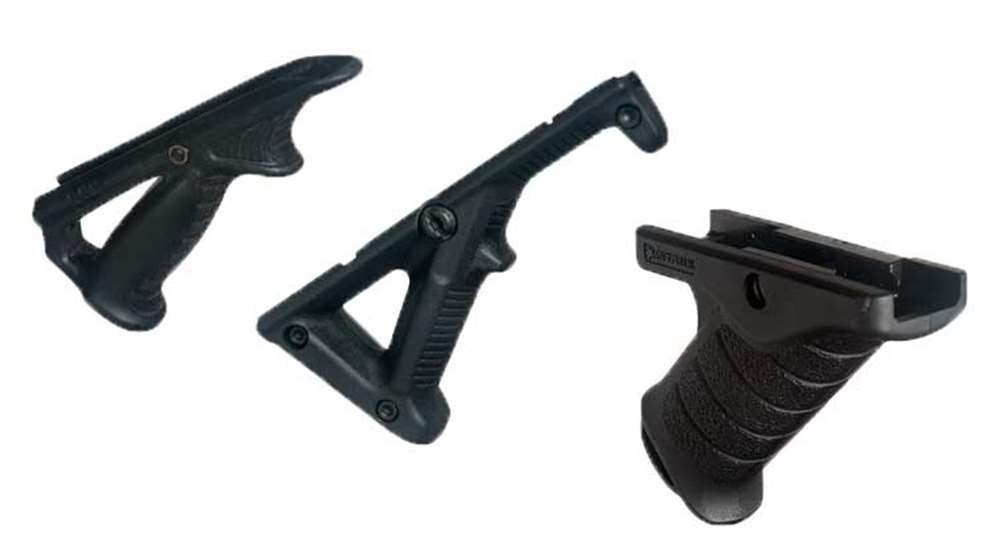
Over the past few years, the Picatinny rail has become the de facto standard for adding accessories on to a firearm, and one of the accessories most commonly added to rifles these days is a foregrip to aid with controlling accuracy.
Foregrips on rifles, especially the AR-15, can be a great place to put your support hand in order to help you move the rifle from target to target or keep your sights steady on on target. There are many different types of foregrips in many different styles, some with integrated bipods or built-in lasers and weapon lights, and those have their uses, but one of the more interesting occurrences as of late is an resurgence of interest in angled grips for the AR-15.
The angled foregrip is nothing new. It can be found on guns as far back as the Model 1921 Thompson submachine gun, but interest in angled foregrips has increased in the past few years with several companies coming out with new versions to attach to Picatinny rails. When using a vertical grip, many people found that their accuracy and control of their rifle improved if they used the grip as a way to consistently place their hand on the handguard of their rifle. Many users also pressed the palm of their support hand against the vertical grip and wrapped their thumb and fingers around the rifle handguard. Eventually, people figured out that if a pistol-like grip was a good idea for your strong hand, it might be a good idea for your support hand, and the angled foregrip rose once again.
One of the biggest problems with any foregrip on a rifle, not just angled foregrips, is figuring out where there the grip should go on the rifle and where you should put your hand on the grip. There are many different opinions on this, and I've found that placing the foregrip about 2 inches back from the end of the rail on a 16-inch barreled AR-15 and the wrapping my last three fingers around the foregrip while placing my index finger out parallel to the barrel and my thumb over the top of the handguard works best for me. I've played around with other ways, and this seems to be the best way for me to hold the rifle for long periods of time and yet still deliver accurate shots and quick target-to-target transitions when needed.
Three popular angled foregrips on the market right now are the Magpul AFG2, the Stark Equipment Express and the FAB Defense PTK. All three cost about the same and look very similar, but there are subtle differences between them.
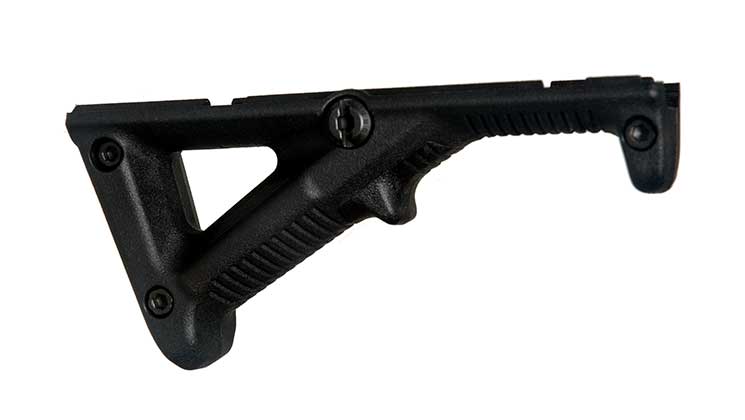
The Magpul AFG2 is the skinniest of the three and is very comfortable to hold when using an aggressive, thumb-forward "C-clamp" grip on the front of your rifle. This is not that surprising, as that grip has been championed in the past by trainers associated with Magpul Dynamics, Magpul's training division. The AFG is also the only one I tried that has a hand stop at the end of the grip to help remind you not to move your support hand forward and possibly wrap around the muzzle brake of your gun, or even worse, in front of the muzzle itself.
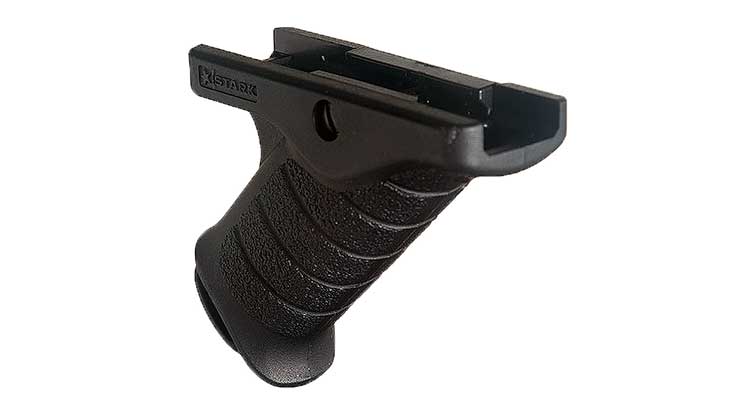
The Stark Express grip feels the most like an actual pistol grip in your hand and can be used as such, with your thumb wrapped around the back like a pistol. It's also quite comfortable to use with the more traditional "thumb forward" grip, although this grip is less angled than the others hand has a small compartment inside of it for storing batteries and similar small things.
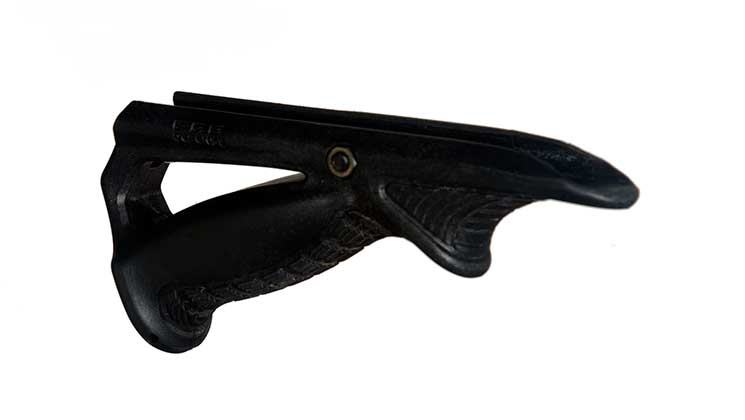
FAB Defense makes the PTK grip, and it is a nice compromise between the sleeker, skinner Magpul grip and the pistol-like grip from Stark Equipment. The PTK has a larger, fuller grip than the AFG2, which made it easier for me to grab ahold of than the AFG2, but it lacks the AGF2's small ridge to the end of the grip that warns you that you might be placing your hand someplace where it might get hurt. As nice added bonus, the PTK grip also has a small storage compartment inside the grip for a CR123 lithium battery or similar-sized object.














